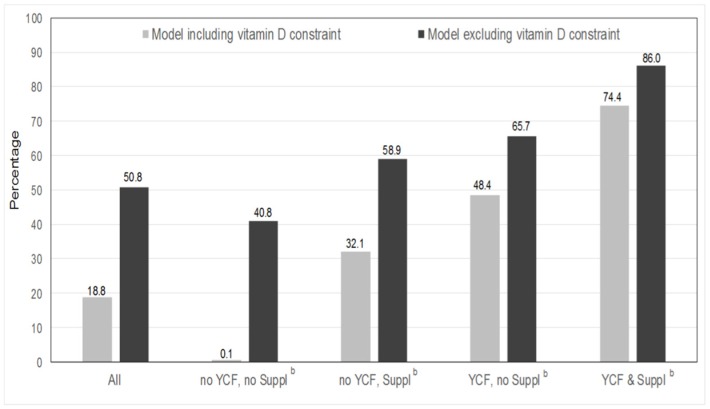Figure 1.
Percentage of children for whom it was feasible to model a nutritionally-adequate diet with their repertoire-foods only for the whole sample and across the four groups of children with and without vitamin D constraint a,b. a Significant (p < 0.01) associations were observed between the percentage of feasibility and groups of children whatever the model (i.e., with and without the vitamin D constraint), with and without adjustments for age and energy (using logistic regression and chi-squared tests, respectively); b “no YCF, no Suppl” refers to children who did not consume either YCFs or supplements during the four days of dietary record; “no YCF, Suppl” refers to those who did not consume YCFs, but who consumed supplements; “YCF, no Suppl” refers to those who consumed YCFs, but not supplements; “YCF & Suppl” refers to those who consumed both YCFs and supplements.

